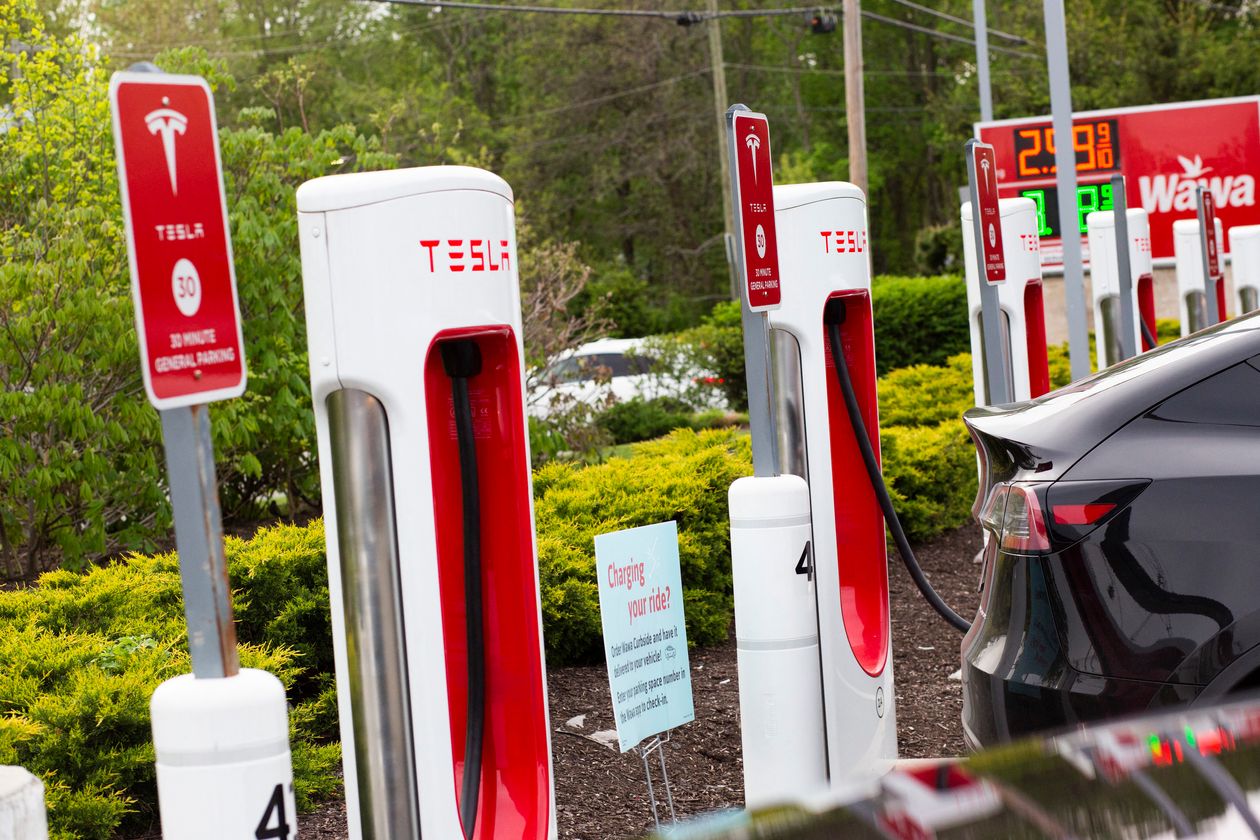4 Factors That Are Popping the EV Stock Bubble
Electric-vehicle investors are going through a brutal stretch after an epic year.
Shares fell hard across the sector on Wednesday as concern about inflation joined the list of worries dragging on the shares. Stock in Tesla (ticker: TSLA), the leader of the EV pack, dropped 4.4% Wednesday, closing below $600 a share for the first time since early March. Shares closed near the low of the day.
The average drop among the EV stocks Barron’s tracks was about 3%. The S&P 500, Dow Jones Industrial Average and Nasdaq Composite dropped 2.1%, 2% and 2.7%, respectively.
Behind all those declines was news early in the day that consumer prices increased 4.2% year over year in April, far higher than the Federal Reserve’s 2% target. In April 2020, of course, things were falling apart, sending prices lower, amid Covid-19 lockdowns, so the gain was relative to a low base. But the March to April pickup in prices, excluding food and energy, was 0.9%. That rate equals full-year inflation of more than 11%.
Inflation that high is like a parasite, eating into savings and sucking energy out of the economy. It also tends to hurt stock valuations, especially those of expensive growth companies that are expected to generate most of their cash flows far in the future. Higher inflation means higher bond yields, which reduce the current value of future cash flows, partly because higher rates give investors options to earn more interest on their money right now.
Wednesday’s inflation-fueled declines are just the tip of the iceberg, though, for EV companies. Tesla stock is down about 34% from its January 52-week high of more than $900 a share. The average drop from 52-week highs for the rest of the EV names is about 70%. Investors just don’t have the appetite for more speculative, higher-growth stocks in the current environment.
Stock in Churchill Capital Acquisition Corp. IV (CCIV), the SPAC merging with Lucid Motors, is down about 73% from its 52-week high. Hyliion (HYLN) shares are down about 86%. And the Chinese EV makers NIO (NIO), XPeng (XPEV) and Li Auto (LI) have fallen an average of about 45% from their 52-week highs.
Inflation is just the latest problem for the stocks. More competition in the EV business, with traditional auto makers pouring billions into developing vehicles, is one problem. At the same time, the global shortage of semiconductors is constraining automotive production around the globe, making it hard for EV makers to benefit from red-hot demand for cars and rising gasoline price.
What is more, many of the new EV companies became public by merging with special-purpose acquisition companies. Many SPAC stocks, not just the EV-related ones, are struggling. The Defiance Next Gen SPAC Derived ETF (SPAK) is down 34% from its February 52-week high.
A dozen EV-SPAC companies Barron’s tracks are now down 15% over the past year on average. Only five remain above their SPAC merger price of $10 a share: Lucid, Fisker (FSR), Arrival (ARVL), QuantumScape (QS), and Nikola (NKLA).
Investors might believe that means those are the long-term winners among the EV SPAC stocks. But it is also possible their higher prices mean there is still further to fall.
Reprinted by permission of Barron’s. Copyright 2021 Dow Jones & Company. Inc. All Rights Reserved Worldwide. Original date of publication: May 12, 2021.
 Copyright 2020, Dow Jones & Company, Inc. All Rights Reserved Worldwide. LEARN MORE
Copyright 2020, Dow Jones & Company, Inc. All Rights Reserved Worldwide. LEARN MORE
This stylish family home combines a classic palette and finishes with a flexible floorplan
Just 55 minutes from Sydney, make this your creative getaway located in the majestic Hawkesbury region.
More than one fifth of Australians are cutting back on the number of people they socialise with
Australian social circles are shrinking as more people look for ways to keep a lid on spending, a new survey has found.
New research from Finder found more than one fifth of respondents had dropped a friend or reduced their social circle because they were unable to afford the same levels of social activity. The survey questioned 1,041 people about how increasing concerns about affordability were affecting their social lives. The results showed 6 percent had cut ties with a friend, 16 percent were going out with fewer people and 26 percent were going to fewer events.
Expensive events such as hens’ parties and weddings were among the activities people were looking to avoid, indicating younger people were those most feeling the brunt of cost of living pressures. According to Canstar, the average cost of a wedding in NSW was between $37,108 to $41,245 and marginally lower in Victoria at $36, 358 to $37,430.
But not all age groups are curbing their social circle. While the survey found that 10 percent of Gen Z respondents had cut off a friend, only 2 percent of Baby Boomers had done similar.
Money expert at Finder, Rebecca Pike, said many had no choice but to prioritise necessities like bills over discretionary activities.
“Unfortunately, for some, social activities have become a luxury they can no longer afford,” she said.
This stylish family home combines a classic palette and finishes with a flexible floorplan
Just 55 minutes from Sydney, make this your creative getaway located in the majestic Hawkesbury region.






















